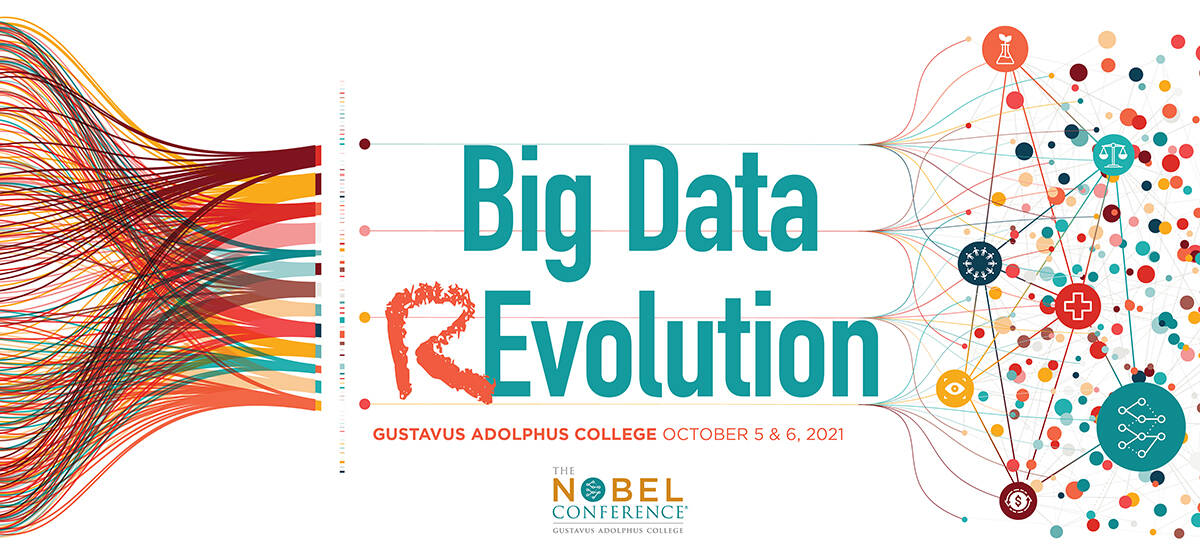Nobel Conference 57Teacher Resources
Watch the Conference
In light of the continued risks from COVID-19, we regret that we cannot welcome high schools to join the conference in person again in 2021. We encourage you to watch the conference online. Here's how:
- The conference will be streamed live from the Nobel Conference website. On conference day, just click on the banner at the top of the main conference webpage to be sent to the livestream.
- All lectures will be immediately archived on the conference website. Find them by going to the conference schedule and clicking on the links you'll find there.
- There is no cost to watch online.
If you have questions, please contact the Office of Marketing and Communication at 507-933-7520 or email nobelconference@gustavus.edu.
We look forward to welcoming high school students back to campus in 2022!!
Teacher Classroom Resources
Data & Statistics Basics
To prepare students for watching the conference, or as a follow up to the conference, here's a selection of curricular activities. They can be used in a range of disciplines, from mathematics to the arts. Click on the links to see how they might be used in your courses.
- Big Data, What Are You Saying?
 This lesson plan is geared toward students in upper-level math and science classes at the high school level. Students will engage with data analysis and elements of probability through the use of an Excel spreadsheet. This in-depth lesson plan includes all necessary materials and can be modified for different classrooms.
This lesson plan is geared toward students in upper-level math and science classes at the high school level. Students will engage with data analysis and elements of probability through the use of an Excel spreadsheet. This in-depth lesson plan includes all necessary materials and can be modified for different classrooms.
- Real Time Data: National Geographic
 National Geographic has provided a webpage for teachers and students to see real-time data being collected and analyzed on various topics. These topics include: air quality, water temperature, water-level data, earthquakes, landslides, populations, volcano alerts, and water. These resources allow students to visualize and see examples of Big Data in real-time and can be integrated into lessons, used as an introduction to Big Data, and so much more.
National Geographic has provided a webpage for teachers and students to see real-time data being collected and analyzed on various topics. These topics include: air quality, water temperature, water-level data, earthquakes, landslides, populations, volcano alerts, and water. These resources allow students to visualize and see examples of Big Data in real-time and can be integrated into lessons, used as an introduction to Big Data, and so much more.
- The Creative Side of Big Data
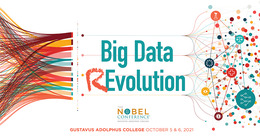 This activity was created by students at Gustavus. They have compiled resources that provide a look at the creative side of Big Data, machine learning, and artificial intelligence, while also bringing ethical dimensions into the conversation.
This activity was created by students at Gustavus. They have compiled resources that provide a look at the creative side of Big Data, machine learning, and artificial intelligence, while also bringing ethical dimensions into the conversation.- Although it’s easy to imagine artificial intelligence the way movies like Terminator present it (i.e., attempting to drive humanity to extinction), machines appreciate the finer things in life as well. This resource will demonstrate how machine learning technologies work, and specifically how they apply to creative endeavors like art and music. Utilizing Big Data to train smart machines opens a new world of creative opportunities.
Health
These activities are intended mostly for upper-level science students with the last one intended for "College in the Schools" or Advanced Placement courses. The first one focses on nutrition and is a web-based activity where data is collected, and then the students can analyze the data and what the information is used for. The second activity is centered on genetics and cancer research and how the connection between the two can help students understand a real-time connection grounded in data.
- National Health and Nutrition Examination Survey Data Portal
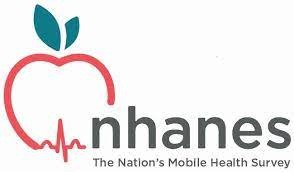 This website provides a lesson that uses Big Data from the National Health and Nutrition Examination Survey, where students can analyze the results and explore this information in an interactive format. Teachers can create a free account and assign the activity to their students through this website. The activity takes data and asks students to respond to questions, and provides an overview of what this data is typically used for. This activity is designed for high school students, in science, math, or health classes.
This website provides a lesson that uses Big Data from the National Health and Nutrition Examination Survey, where students can analyze the results and explore this information in an interactive format. Teachers can create a free account and assign the activity to their students through this website. The activity takes data and asks students to respond to questions, and provides an overview of what this data is typically used for. This activity is designed for high school students, in science, math, or health classes.
- Decoding Cancer
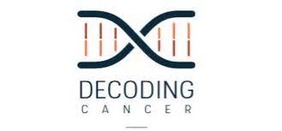 This is a collaborative site between Rutgers University, the New Jersey School of Public Health, and the Val Skinner Foundation. The website provides various lesson plans, activities, and resources that use data to further the understanding of genetics and cancer research. These activities are ideal for a high school setting.
This is a collaborative site between Rutgers University, the New Jersey School of Public Health, and the Val Skinner Foundation. The website provides various lesson plans, activities, and resources that use data to further the understanding of genetics and cancer research. These activities are ideal for a high school setting.
- Tackling “Big Data” with Biology Undergrads: A Simple RNA-seq Data Analysis Tutorial Using Galaxy
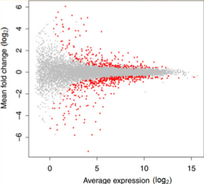 This is an advanced three-section laboratory from Course Source, a web-based teaching resource for undergraduate biology education, and would be best for "College in the Schools" or an AP biology course. In this activity, students will be using publicly available data and a cloud-based analysis tool to interpret data and genetic sequences. The provided tutorial utilizes RNA-seq data from a published study focused on nematode infection of Arabidopsis thaliana. Based on their analysis of the data, students are challenged to develop new hypotheses about how plants respond to nematode parasitism.
This is an advanced three-section laboratory from Course Source, a web-based teaching resource for undergraduate biology education, and would be best for "College in the Schools" or an AP biology course. In this activity, students will be using publicly available data and a cloud-based analysis tool to interpret data and genetic sequences. The provided tutorial utilizes RNA-seq data from a published study focused on nematode infection of Arabidopsis thaliana. Based on their analysis of the data, students are challenged to develop new hypotheses about how plants respond to nematode parasitism.
Climate Change
Climate Science has been impacted by Big Data and this section has a variety of activities to help students visualize and understand this concept. One of the features of climate research requires large data sets that are often confusing, with the result that they are rarely explored by students and citizens. These activities contain lots of possibilities.
- National Oceanic and Atmospheric Administration Classroom-Ready Data Resources

- This website provides educators with several lesson plans and activities for middle school and high school students. Through the use of interactive maps and data analysis, students are able to learn about the impact of climate change on earth’s systems.
- Climate & data ACLIPSE activities
- MARE, Marine Activities, Resources & Education, provides real-time data on the environment through various activities. Each activity is thoroughly explained and outlined and incorporates ways to analyze data while improving literacy on climate change.
- Drought data and projections
- PBS provides a lesson plan that analyzes U.S. drought data in a digestible manner. The website also includes additional readings and discussion questions to support student learning and engagement.
- Fishing for information
- Students will use data from the Alaska Groundfish Survey Data provided by the NOAA Fisheries to gain a better understanding of the importance of data and what can be learned from analyzing it. This lesson plan is best for upper high school students in an AP biology or environmental science class.
- Climate & data ACLIPSE activities
- This website provides educators with several lesson plans and activities for middle school and high school students. Through the use of interactive maps and data analysis, students are able to learn about the impact of climate change on earth’s systems.
- How Big Data Helps in the Fight Against Climate Change
 This is an introductory article on climate change ramifications from inside Big Data (August 2020). The website is dedicated to artificial intelligence, machine learning, and solving big problems with technology and data. The article would pair well as an introduction to a unit, lesson plan, or activity.
This is an introductory article on climate change ramifications from inside Big Data (August 2020). The website is dedicated to artificial intelligence, machine learning, and solving big problems with technology and data. The article would pair well as an introduction to a unit, lesson plan, or activity.
- People and Climate Change: The Data Is In
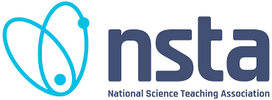 This is a National Science Teachers Association-derived unit based on the Next Generation Science Standards in regards to Big Data and climate change issues. This unit will require students to take data and make interpretations to reach objective conclusions. Some of the materials for the classes will need to be printed in color in order to utilize the full extent of the data. This is a lengthy unit and will require some time to process and fully understand, and can be modified to fit into a middle or high school science course.
This is a National Science Teachers Association-derived unit based on the Next Generation Science Standards in regards to Big Data and climate change issues. This unit will require students to take data and make interpretations to reach objective conclusions. Some of the materials for the classes will need to be printed in color in order to utilize the full extent of the data. This is a lengthy unit and will require some time to process and fully understand, and can be modified to fit into a middle or high school science course.
Privacy
Online privacy is an issue relevant to all students, and one to which they should be introduced. Our data footprint can be used in both helpful and harmful ways. These lessons are flexible and can apply in a number of different courses.
- Teaching Privacy
 Teaching Privacy is a multidisciplinary National Science Foundation collaboration from the International Computer Science Institute and the University of California, Berkeley. They have created "Ten Principles for Online Privacy", with each principle including a series of lesson plans, activities, and readings. The principles revolve around privacy, computer etiquette, and the need to make well-informed choices about personal data. Each module can be used as stand-alone activities or linked together to encompass a larger more in-depth unit.
Teaching Privacy is a multidisciplinary National Science Foundation collaboration from the International Computer Science Institute and the University of California, Berkeley. They have created "Ten Principles for Online Privacy", with each principle including a series of lesson plans, activities, and readings. The principles revolve around privacy, computer etiquette, and the need to make well-informed choices about personal data. Each module can be used as stand-alone activities or linked together to encompass a larger more in-depth unit.
- Digital Citizenship Curriculum
 This non-profit organization has the goal of helping families and educators make sense of the digital world to which students are exposed, and make educated choices in that world. There is a complete curriculum for K-12 students. Educators can select a grade level, and browse through various activities, ranging from cyber-bullying to privacy and security, and more. Joining is optional and the activities are broad and all-encompassing.
This non-profit organization has the goal of helping families and educators make sense of the digital world to which students are exposed, and make educated choices in that world. There is a complete curriculum for K-12 students. Educators can select a grade level, and browse through various activities, ranging from cyber-bullying to privacy and security, and more. Joining is optional and the activities are broad and all-encompassing.
- Data Privacy in the Age of Third Party Cookies

- Gustavus students created a lesson plan on understanding cookies in the world of data. This activity allows middle and high school students to take a look at how cookies are prevalent in their lives and how they relate to big data. Here is the PowerPoint Presentation , handout , and lesson plan .
Government
Big Data is used by government agencies at both the state and federal level. Our data is used to help policy makers create smarter laws and regulations on everything from fishing licenses to transportation patterns on large metropolitan freeways and train and bus lines. Census data is also used for campaign purposes and delineation of congressional districts to name just a few uses.
- Resource Library - Census - National Geographic
 The U.S. Census collection is a perfect example of big data methods being used to gather information on population. Census data is used in a variety of ways, including resource allocation and political representation. National Geographic has created a resource library with a variety of activities that introduce and apply Census data and collection. There are thirteen activities/articles/lesson plans for teachers to use with their students about the Census and related topics.
The U.S. Census collection is a perfect example of big data methods being used to gather information on population. Census data is used in a variety of ways, including resource allocation and political representation. National Geographic has created a resource library with a variety of activities that introduce and apply Census data and collection. There are thirteen activities/articles/lesson plans for teachers to use with their students about the Census and related topics.
- Big Data and Politics
- C-Span Classroom provides a lesson plan outline for taking a look at how Big Data is used by politicians and campaigns. This plan includes a variety of materials and discussion questions and is a great resource to begin a lesson on politics, the media, and current events, for middle and high school students.
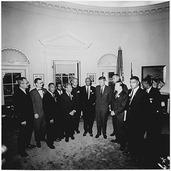 The Impact of the JFK Assassination on American Politics
The Impact of the JFK Assassination on American Politics
- National Geographic has created a lesson plan that has students analyze 1964 presidential election data from the National Archives to understand the impact of JFK’s death in relation to the Civil Rights Act of 1964 and the Voting Rights Act. This activity is beneficial for a high school social studies class, and allows students to use data to examine historical events.
- The Politics of Place-Naming
 This resource from National Geographic provides an activity using big data through the usage of the geographic information system (GIS) to learn about place naming, specifically in regards to Martin Luther King Jr. and streets named after him. This activity is best suited for high school students and paired with a geography or history lesson.
This resource from National Geographic provides an activity using big data through the usage of the geographic information system (GIS) to learn about place naming, specifically in regards to Martin Luther King Jr. and streets named after him. This activity is best suited for high school students and paired with a geography or history lesson.
Commerce
Big business uses Big Data regularly and this affects how we are viewed when we engage in online shopping or even Google searches. Our searches leave “footprints” that help direct online sales and advertising for the objects we are looking to buy.
- BARTy - traffic data and urban planning
 This is an activity for a social studies or a mathematics class that is looking to analyze and mine Big Data to make insights on traffic use in the San Francisco Bay Area Rapid Transit System (BART). The students will be using the free Common Online Data Analysis Platform (CODAP) which has been developed for students between grade 6-14. This tool uses a visual approach to analyze data and makes the math of it all rather fun to use and see. Here is the website to get started with CODAP. This program is hands-on oriented. codap.concord.org
This is an activity for a social studies or a mathematics class that is looking to analyze and mine Big Data to make insights on traffic use in the San Francisco Bay Area Rapid Transit System (BART). The students will be using the free Common Online Data Analysis Platform (CODAP) which has been developed for students between grade 6-14. This tool uses a visual approach to analyze data and makes the math of it all rather fun to use and see. Here is the website to get started with CODAP. This program is hands-on oriented. codap.concord.org - Here is the teacher guide to this activity This guide provides an outline for three different activities using this data selection.
- The Human Face of Big Data
 This lesson plan is divided into two major components, a 45 to 55 minute activity and a 56-minute documentary, best suited for late middle school and high school students for a business or social studies lesson. The lesson plan includes a variety of discussion questions, readings, using the internet, analyzing infographics and more. The lesson is a collaboration between several large national corporations including FedEx and Cisco, among others.
This lesson plan is divided into two major components, a 45 to 55 minute activity and a 56-minute documentary, best suited for late middle school and high school students for a business or social studies lesson. The lesson plan includes a variety of discussion questions, readings, using the internet, analyzing infographics and more. The lesson is a collaboration between several large national corporations including FedEx and Cisco, among others.
The Human Face of Big Data is a 56-minute documentary that could be
incorporated into this lesson plan. It is available on YouTube.
- How Will Big Data Transform E-Commerce?
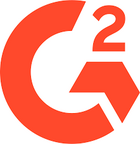 This article is an introductory piece that would pair well with a big data/commerce lesson plan. The article discusses what big data is and how it has impacted e-commerce. It was written in July 2020, and is suitable for high school students.
This article is an introductory piece that would pair well with a big data/commerce lesson plan. The article discusses what big data is and how it has impacted e-commerce. It was written in July 2020, and is suitable for high school students.
More Big Data Information
Check out this Big Data Resources site for additional recourse compiled for the Nobel Conference audience.
